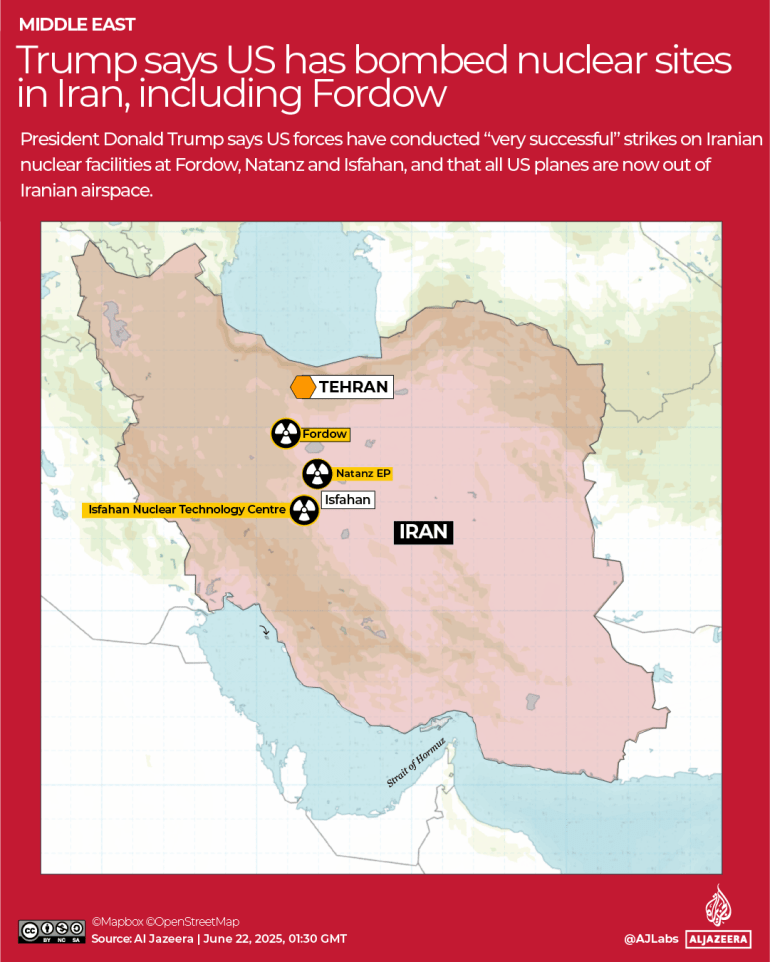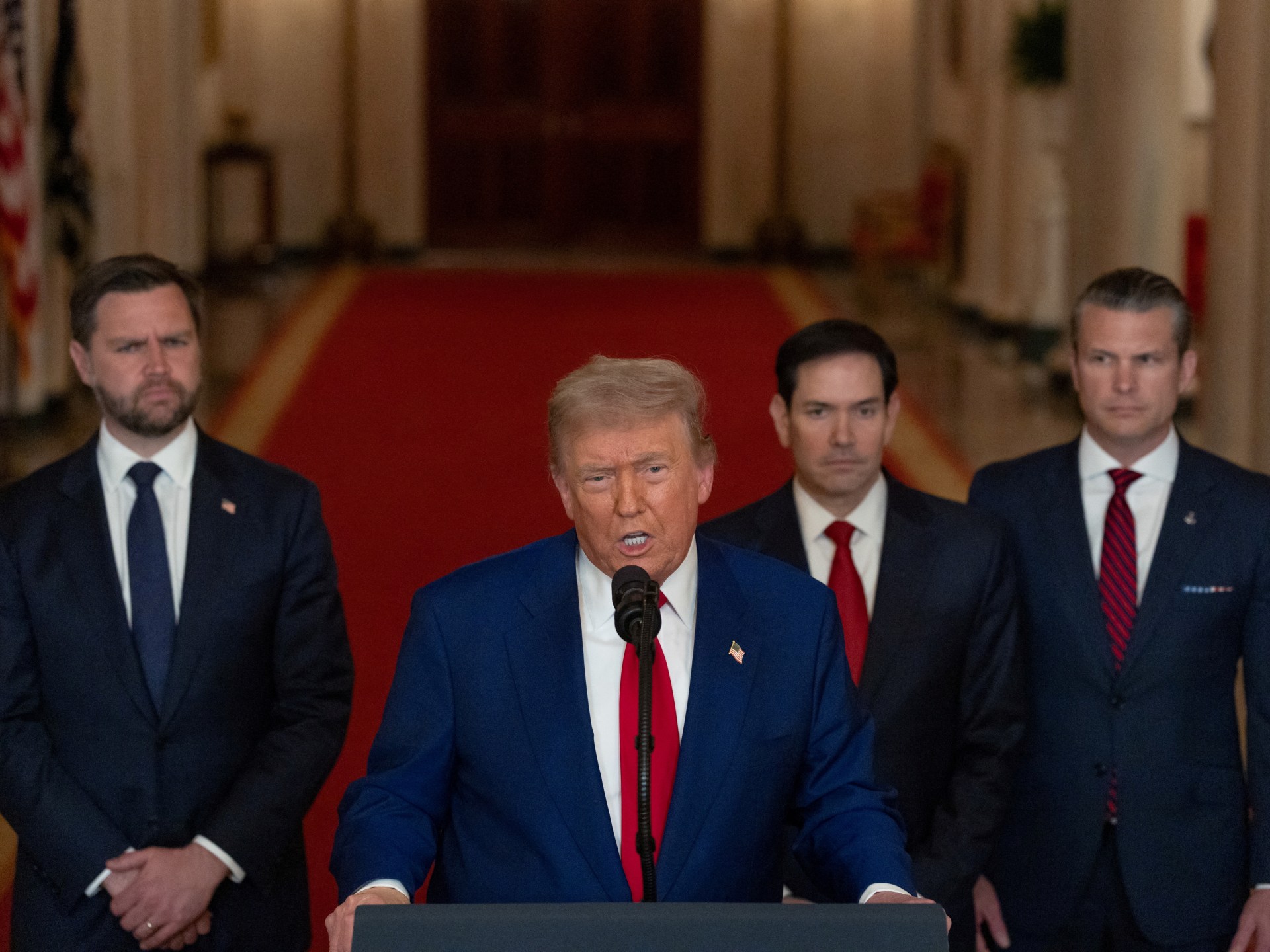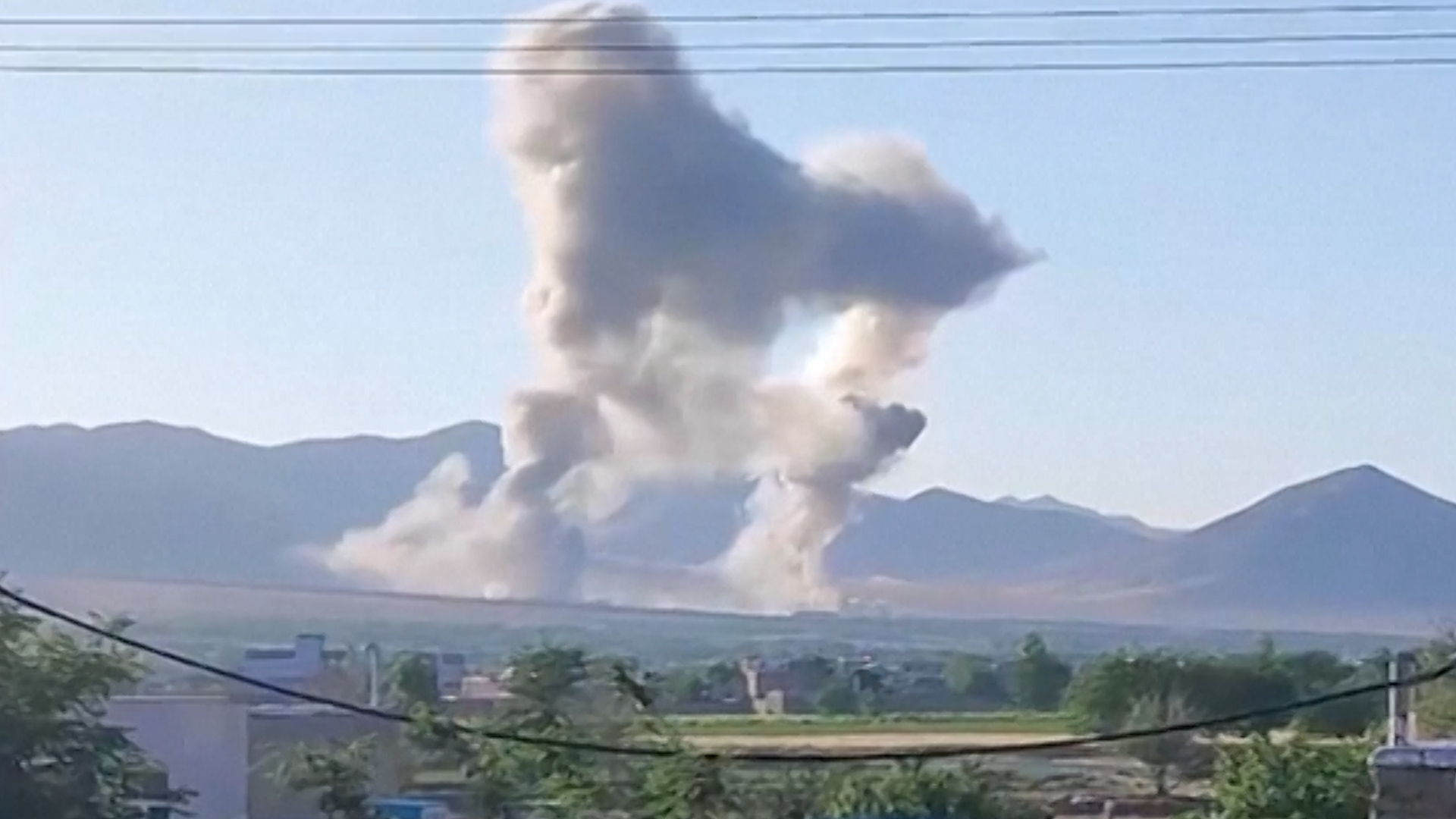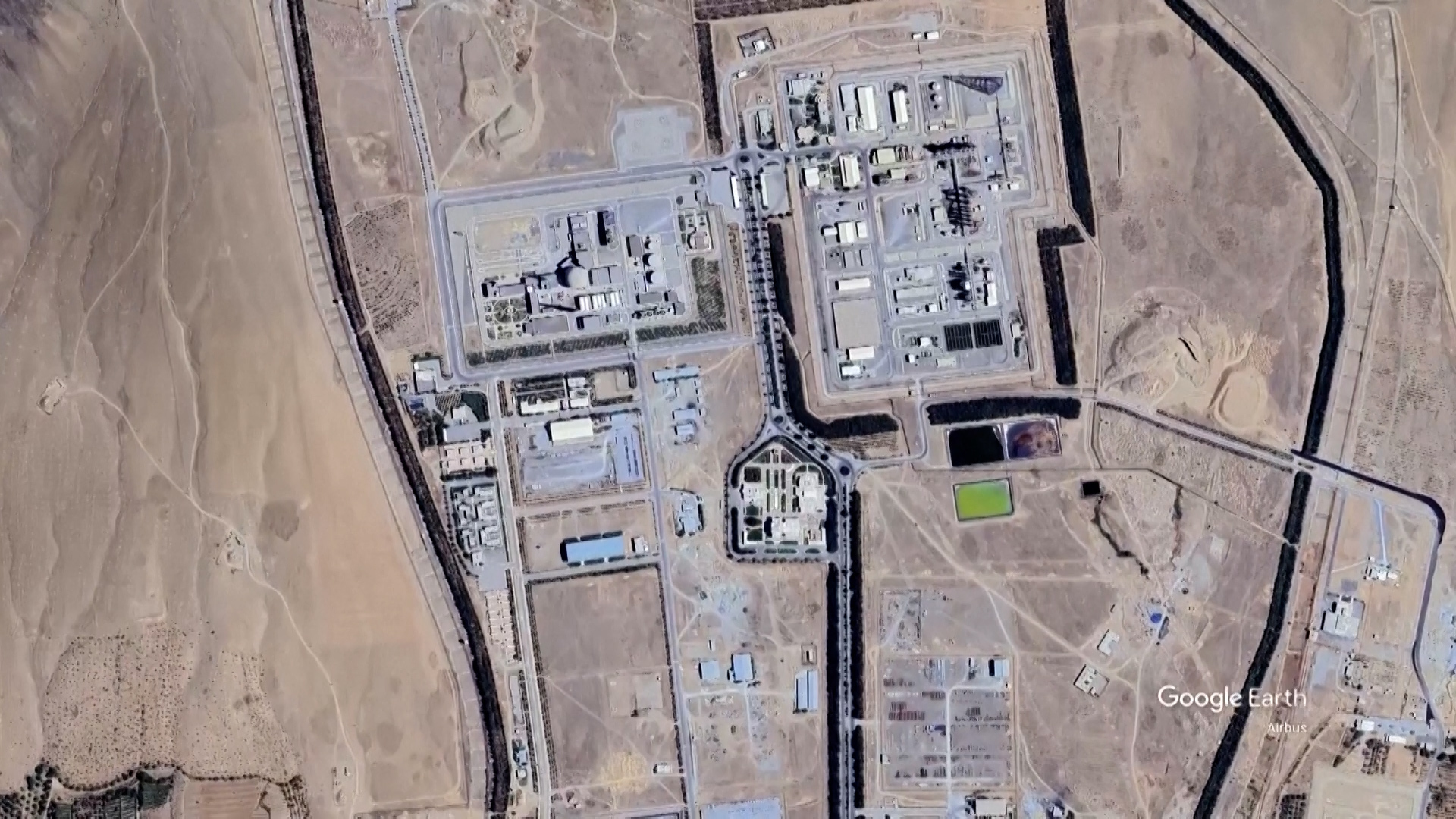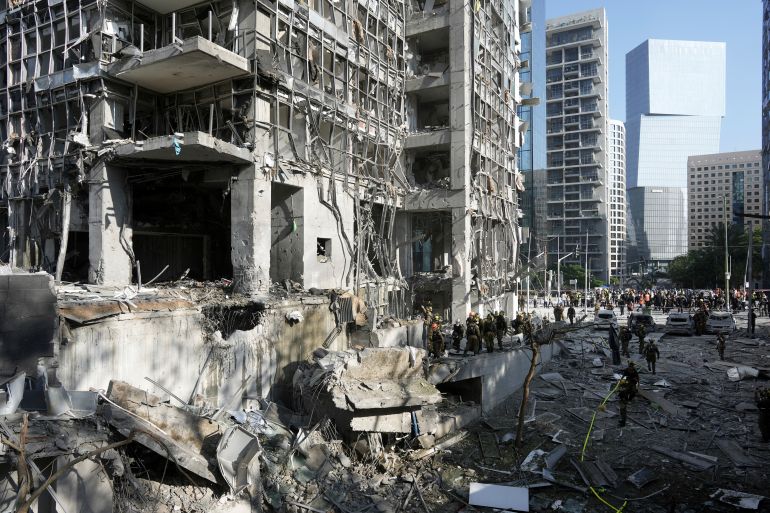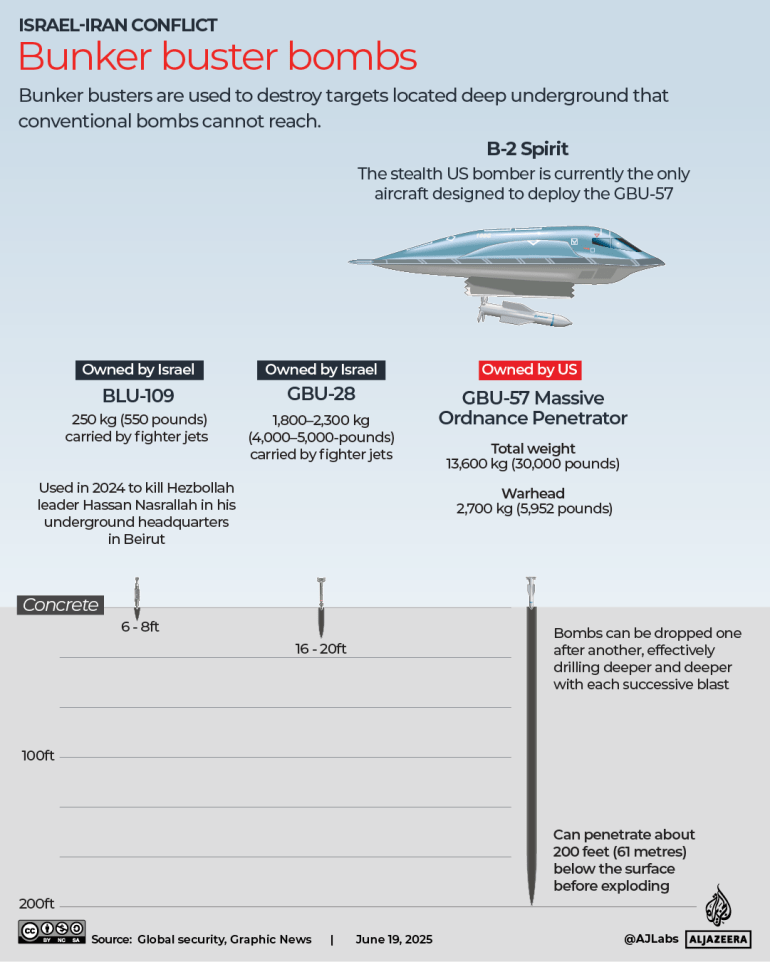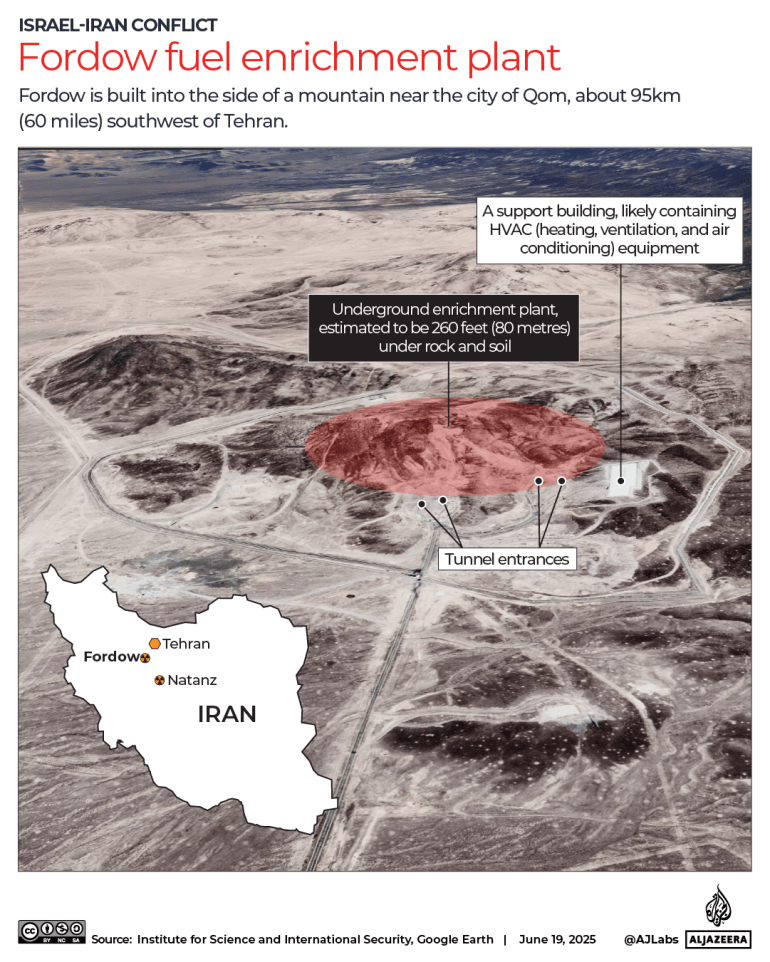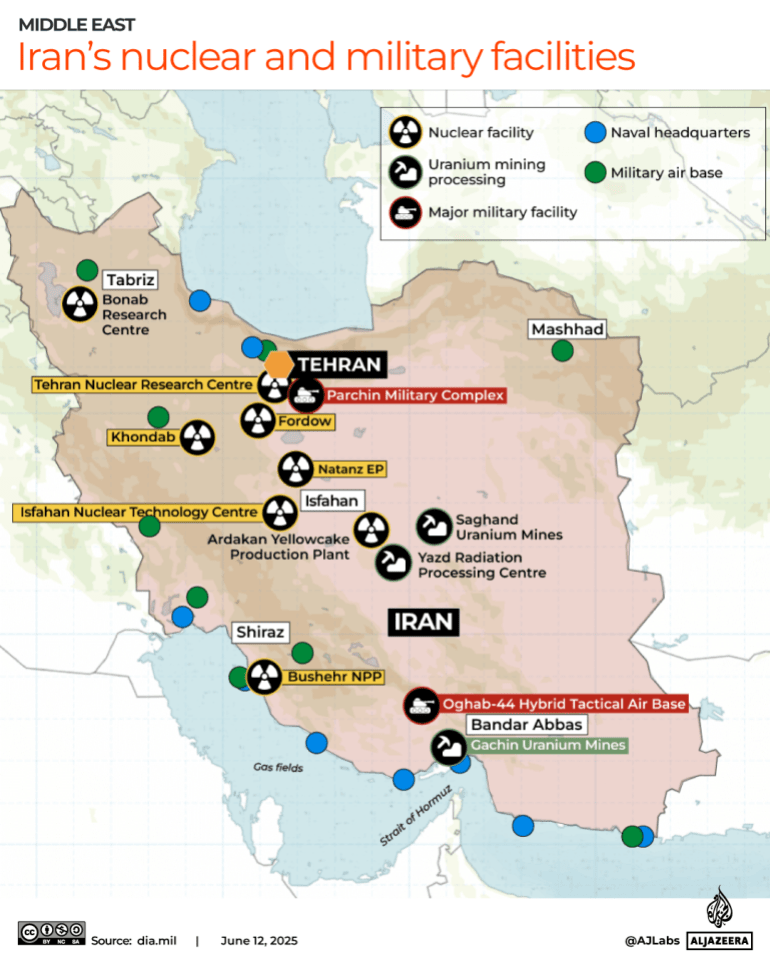Iran, Israel trade missiles as US bombing of nuclear sites escalates crisis | Israel-Iran conflict News
Iran and Israel have exchanged a barrage of missiles after the United States bombed key Iranian nuclear sites, dramatically escalating tensions in the Middle East.
Iran on Sunday launched two volleys of 27 missiles, targeting Israel’s main Ben Gurion airport near Tel Aviv, research facilities, and command centres, an Iranian state news agency reported.
Air raid sirens were sounded across most of Israel, sending millions of people to safe rooms and bomb shelters as explosions and missile interceptions were seen above the commercial hub of Tel Aviv, Jerusalem, the port city of Haifa, and other parts of the country.
At least 20 people were wounded, according to Israeli emergency workers.
“This is certainly the first time that we have seen two volleys coming in such close succession. Usually, there are hours between each volley of missiles. This time, it was less than half an hour,” said Al Jazeera’s Nour Odeh, reporting from Amman, Jordan.
The targeted areas spanned the occupied Golan Heights in Syria to the Upper Galilee to northern and central Israel, affecting 10 separate sites either directly by missiles or by large shrapnel, Odeh said.
“There is extensive damage in those sites, especially in the Tel Aviv area and Haifa,” Odeh said.
Videos from Tel Aviv and Haifa towards the north showed rescue teams combing through debris, apartments reduced to rubble, mangled cars along a street filled with debris, and medics evacuating injured people from a row of blown-out houses.
In a statement, the Israeli army said it was investigating why no air raid warnings were sounded in Haifa.
Israel also carried out another wave of bombings on “military targets” in western Iran. The Israeli military earlier said its strikes destroyed Iranian missile launchers and targeted soldiers.
The latest exchange of missiles between the Middle Eastern enemies followed the US bombing of Iran’s nuclear sites at Natanz, Isfahan and Fordow, with President Donald Trump saying the attacks had “obliterated” the three facilities.
Trump said Iran’s future held “either peace or tragedy” and that there were many other Iranian targets that could be hit. “If peace does not come quickly, we will go after those other targets with precision, speed and skill,” he said.
Iran responded by saying it “reserved all options” to defend itself and warned of “everlasting consequences” if the US joined the war.
In a statement, Iran’s Ministry of Foreign Affairs condemned the US attacks on its nuclear facilities as a “gross and unprecedented violation” of international law.
“The world must not forget that it was the United States that, in the midst of a diplomatic process, betrayed diplomacy” by supporting Israel’s “aggressive action”, and is now waging “a dangerous war against Iran,” the ministry said.
It has become clear that the US “adheres to no rules or ethics, and in order to advance the aims of a genocidal and occupying regime, spares no lawlessness or crime”, it added.
Meanwhile, Israel said it will temporarily reopen its airspace for flights from 11:00 GMT on Sunday as it repatriates thousands of citizens left stranded overseas by its war with Iran, the country’s airport authority said.
Ben Gurion Airport “will open for landings from 02:00pm-8:00pm as part of Operation Safe Return”, the authority said in a statement, referring to the government’s efforts to bring home citizens.
Most airlines continue to avoid large parts of the Middle East after the US attacks on Iranian nuclear sites, according to the flight tracking website, FlightRadar24.
